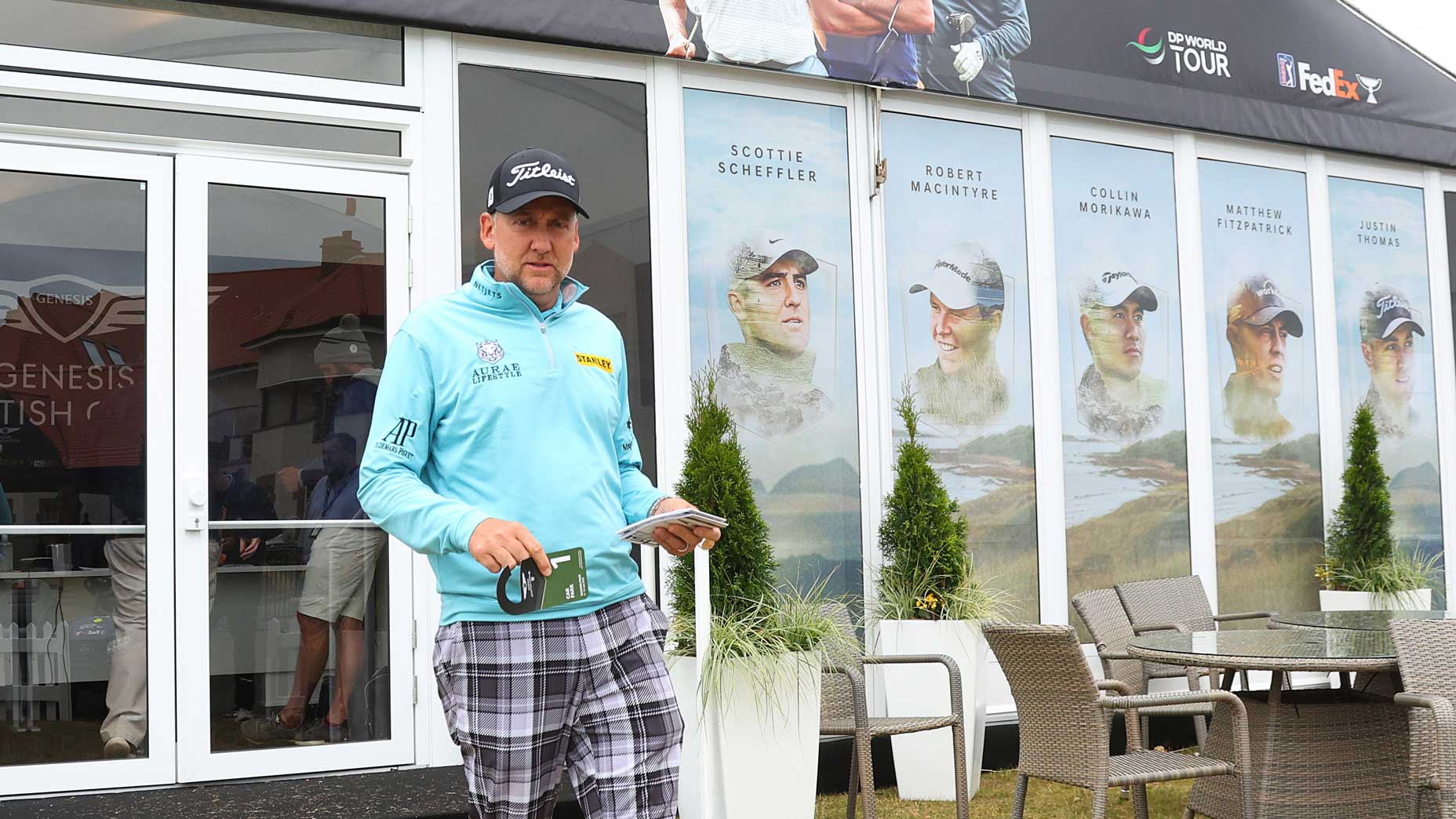NORTH BERWICK, Scotland — They say firm turf and windy conditions separate great from average on the PGA Tour. Not just players. Caddies, too.
“It makes us prove our worth,” Austin Gaugert told me a couple years ago, when he was caddying regularly for Alex Noren. Eighteen holes into looping at the Scottish Open, I can tell you with absolute certainty: it’s true.
Everyone thinks they can be a caddie. And they’re not totally crazy for thinking it. Carry a bag, step off the yardages, exude confidence. In America, at the PGA Tour’s typical stops, that might be enough, too. But in Scotland, where 20 mph winds are normal and the ball never stays where it lands, the course becomes a 300-acre chessboard.
Joel Dahmen, whom I have the privilege of looping for this week, put a 2-iron in the bag this week for the first time. Links golf is all about the ground game, right?
Right!
Dahmen hit that 2-iron well in practice. So well that with the 1st hole playing downwind, it felt like the only option. We’d agreed on the 2-iron days ago. But then Brandon Wu stepped in Wednesday and told Dahmen he thought the astute play was to take driver up and to the left, over the bunkers. Was 2-iron the move? We stuck with it, and Dahmen blocked his opening tee ball out to the right. In an instant, we were one over.
At the Scottish Open, there’s chatter about everything except the golfBy: Sean Zak
If you want to be a good caddie in Scotland, you had better be a good player. Dahmen’s next hole left him with a choice between a low 5-iron and a high 4-iron. 8-handicaps like me — we don’t know what we don’t know. And there’s a lot we don’t know. How could I possibly weigh in on which shot shape was better? He chose 4, I said I liked it, and he hit it to 20 feet. Easy stuff.
A few minutes later, Dahmen hit his drive on the par-5 3rd a yard off the fairway. His ball came to rest on a slight downslope, short of a bunker. From 50 yards away, I thought the tiny mound above the bunker might come into play. But is that the sort of thought to inject into your professional hitter’s head? I thought not. We agreed a 2-iron on the ground would roll and skirt onto the green. Worst-case scenario, it would kick to the left of the green and leave a long two-putt for birdie.
Unfortunately, what followed was an ugly combination of thwack-thud. The ball skipped off the mound and toppled forward another 115 yards. “I didn’t see that happening, Sean,” Dahmen said, immediately after impact. Perhaps he would have seen it coming, had I opened my mouth! To open one’s mouth or keep it shut — that is the caddie question.
Dahmen didn’t have his best stuff Thursday, and we saw that down the back-nine. A pulled short iron into the hay on 11, a slightly blocked approach on 12, a shot that was so good it went long on 13 and slightly heavy contact on 14 that needed to fly one more yard. Add it up and you’ve got a grinding par and three bogeys in four very quick holes. I barely blinked.
What do you say when something seems off? Make sure you get it up there? Put a good one on it? Viktor Hovland’s caddie, Shay Knight, shared some timeless caddie advice for me Wednesday afternoon: Show up, keep up, shut up.
When it was all complete, I asked Joel what I could have done better. He paused and thought about it. “Honestly, nothing.” He might have even been right, if not for the near-disaster on 18.
As it turns out @GenoBonnalie’s job is extremely safe
— Sean Zak (@Sean_Zak) July 7, 2022
I couldn’t stifle a laugh to Joel as we walked up the 18th fairway. I’d been so locked in on our performance, I admitted, I had no clue how the other players in our group were scoring. Sepp Straka started slow and finished solid. Perhaps he was at two over. Same for the third player in the group, Mikko Korhonen. “I feel like he could be anywhere from one under to five over,” I said.
“That’s interesting,” Joel replied. “He’s at two under, maybe three.”
Less than a minute later, it dawned on him.
“You’ve been filling out his scorecard, right?” he asked as we stood over his greenside chip on 18. I had been handed Korhonen’s scorecard more than four hours ago, and while I had kept good care of it, there were 17 unmarked boxes.
Was it my job to mark those tallies? Was it Joel’s? I hadn’t said more than a word or two to Korhonen all round long, let alone tracked his chips and putts. Thankfully, behind the everyman facade, Dahmen is hyper-aware.
He grabbed the card from me and rattled off every Korhonen score in about 30 seconds, all from memory. I was equal parts impressed and relieved. But I’d be lying if I didn’t think it distracted us from the up and down that awaited us.
Did Joel rush through his chip in the immediate aftermath of scorecard-gate, sending his ball skidding past the hole and off the green? Perhaps. Did I step in to stop him at any point? No. Would a veteran caddie have asked him to reset and take his time? Probably.
Joel’s par putt from off the green snuck onto the putting surface and his bogey try burned the edge. He tapped in for double to close his round. Seventy-six strokes, six over par. As the wind picked up in the afternoon and the cut line projections inched closer to two over par, that finishing double bogey felt even worse.
That’s one feeling players and caddies of all levels can agree on: regret.











